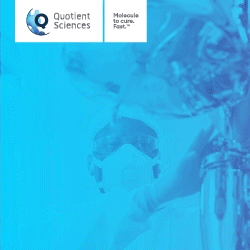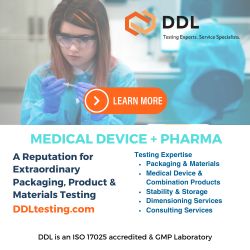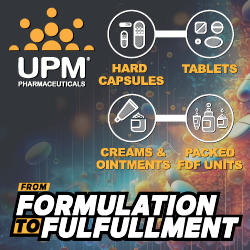Issue:July/August 2013
MANAGEMENT INSIGHT - Lessons From the Auto Industry
Chevrolet is an all-American car. Ferrari is thrilling. Kit Kat goes with coffee on your break. Campbell’s soup conjures up images of warm kitchens and loving mothers in aprons. These are examples of branding – the images that come to mind when you think of a particular product.
Branding may begin very early in the product lifecycle, such as with the identification of a missing segment – let’s say a pain product that can’t be abused. But in our industry, marketers rarely have the luxury of so much time. More often, the drug is developed first, then the marketing department identifies the target consumer, and finally an image is designed to appeal to that customer.
Branding is a vitally important part of the sales process, but there is such a thing as too much branding, says Bob Lutz in his straight-talking book, Car Guys vs. Bean Counters. One of America’s most respected business leaders, Mr. Lutz is a veteran of GM, BMW, Ford, and Chrysler, but he’s best known for the last decade of his career when he was pulled out of retirement to turn GM around. GM had become so wrapped up in developing brand images, says Mr. Lutz, that the company had lost sight of the need to develop excellent, high-quality, and desirable cars.
GM’s Saturn brand may well go into the MBA textbooks as the poster child for over-branding. The target buyer for Saturn was defined as the “post-modern transportation user” who saw his or her car only as means of getting from A to B. The brand focused exclusively on customer friendliness in the sales experience – so much so that the character of the car itself was deemed irrelevant. As such, the car developed for this buyer was, well – characterless. Just a means of transportation. It was soon buyer-less as well, and the last Saturn rolled off the assembly line in 2009.
In a similar branding blunder, GM marketers decided that the five-spoke wheels of the Chevrolet were a defining characteristic; so only Chevys could have five spokes, thereby enhancing the brand’s market differentiation. Unfortunately, this strategy failed to take into account all of the other carmakers, many of which continued to actively produce five-spoke models.
Opel, in an attempt to please a priceconscious target market, accepted cost-cut upon cost-cut, until the factory was actually ordered to stop polishing and smoothing the metal prior to painting, a process known as “metal finishing” which was, at the time, necessary to ensure a lump and blemish-free paint job. The resulting patchy paint job did not transition smoothly into American garages.
With Mr. Lutz at the helm, GM began to relearn the art of making iconic cars. Product excellence returned to the forefront of considerations with the development of the Chevrolet Volt, the Equinox, the Cadillac CTS, and the Buick LaCrosse, among others.
Branding is not forgotten in the new GM, merely repositioned. The new LaCrosse, for example, is a vastly improved product that is also completely rebranded. For years, LaCrosse was a fixture of the over 68 year olds’ Florida garage; admittedly an endangered market. The new LaCrosse has been completely rebranded for a youthful buyer, offering Bluetooth and other high tech features and featuring Shaquille O’Neal as a celebrity endorsement.
In Car Guys vs. Bean Counters, Mr. Lutz offers a hotly opinionated, straight up, cigar-smoking take on American industry, and the fight to return to product excellence. Sometimes arrogant and not one to mince words, he may offend at times, but his experience provides food for thought that can be applied to any industry.
PHARMA BRANDING
Pharma will never be able to brand the way the car industry does. We simply don’t have as much time as the car guys have. Lee Iacocca could begin with a concept: “We need a good fast sports car that most people can afford.” He could put his designers to work creating a car for that segment. His marketers could choose a racy and exciting name – like Ford Mustang. Then they could spend literally decades developing and refining the image.
It takes 36 to 48 months to bring an average car from paper to product – a remarkably long time in the retail segment where R&D for most products is usually said and done in fewer than 6 months, with brand development tacking on another year. The marketing efforts that support the brand then come into place and can stand behind the brand for decades. Brand destruction rarely happens in the retail world, and the concept of lifecycle management is virtually unknown.
In pharma, R&D takes 10 to 15 years. Drug patents last 20 years, but because they are applied for before clinical trials, the effective life of a drug once it hits the market is 7 to 12 years. After that, the brand fizzles and self-destructs.
True, there are some drugs that have hung around. Premarin launched in 1942 and didn’t peak until 2001. That’s nearly 60 years. Augmentin launched in 1981 and also peaked in 2001, a run-up of 20 years. Most drugs however are launched like fireworks, appearing on the marketplace in a sudden bright flash before fading to black.
Pharma branding rarely begins before product development. More often than not, our products are created first, and markets are identified after. It would be folly to pour resources into brand development in Phase I or II, where the rate of failure far exceeds the rate of success.
Phase III, however, is a different story. In this phase, the fledgling drug is going to meet its first targeted patients and doctors, and it needs to do so with at least a tentative persona associated with it. AstraZeneca claims the ideal time to develop a brand is between Phase II and Phase III.
“The marketing team is heavily involved in [Phase III] clinical trials,” Jon Parton, Director of Direct Marketing at AstraZeneca told BrandChannel last May. “With a brand’s product profile already established, if a particular claim is important, the team needs a study to prove it. We’re not selling coffee – we can’t say things we can’t support.”
Unfortunately, far too often, branding in many companies doesn’t begin until well into Phase III. This can be because of internal delays or factors beyond the company’s control – another company launches a competing product, a change in government policy, or another R&D breakthrough causes the product to be fasttracked unexpectedly.
Then there is the rather sticky question of defining whom we are branding for. Who are we really selling to? Is it the patient? The prescriber? Or the payer (insurance company or the government)? Even within these three segments are numerous sub-segments. All patients with type 2 diabetes, for example, are not the same. They may be at different stages in the disease, have different contraindications, and different compliance rates. Physicians too can be categorized, primarily into those who are more or less willing to try new products. Those more willing will be targeted for new drug releases; those less willing gain the marketing attention of companies trying to defend established products.
Payers are a relatively recent addition to the segmentation game, and they too can be sub-divided into those who prescribe with the sole purpose of minimizing cost, and those who emphasize a holistic approach to curing a patient’s condition.
These three segments and their subsegments define the pharma customer, and serve a purpose in trying to simplify a very complicated picture, but the model is increasingly unsatisfactory. More and more patients and patient advocacy groups are making more prescribing decisions than their doctors. Early adapting doctors are often constrained from prescribing when payers prohibit it.
Perhaps as compensation for a brief product lifecycle and fragmented target market, our industry throws a lot of money at the problem. According to the Londonbased medical Journal BMJ, the pharma industry spends $19 on marketing for every $1 spent on R&D. It wouldn’t be hard to argue that this represents significant over-branding. Mr. Lutz would tell us to put a little more of this money back into R&D, and get back to focusing on product excellence.
PHARMA MANUFACTURING
Transplant an engineer from a 1950s car plant into a modern factory and he’d barely recognize the place, write Gonce, Andrew, and Schrader in Plantopia? A Mandate for Innovation in Pharma Manufacturing, published by McKinsey and Company. Welding robots buzz and hum, fast changeover paint booths blast color, and the just-in-time parts delivery system supplies outsourced parts precisely as they are needed.
Transplant a chemist from the same generation and my guess is he’d be a little disappointed. Sure, we have computers and HPLCs, but is the manufacturing process changed enough to make him wonder if he’d wandered into the right place? Probably not. The blockbuster model of excess capacity is still the norm, despite the recent death, or at least near death, of the blockbuster model. The drug development pipeline is serving up drugs that need smaller batches, shorter runs, and higher quality, but the manufacturing process remains unchanged. There have been moves toward leaner production, tweaking here and there, but not redesigning from the ground up, as other industries have done.
“Pharmaceutical manufacturing operations are inefficient and costly,” wrote the FDA in 2004, as quoted by Gonce, Andrew, and Schrader. “Compared to other industrial sectors, the rate of introduction of modern process design principles, new measurement and control technologies, and knowledge management systems is low. Opportunities for improving efficiency and quality assurance…are not generally well recognized.” A scathing rebuke from arguably the paramount bureaucracy of our industry. Ouch.
Nothing much has changed since that quote was transcribed a decade ago. By now, we should see widespread use of continuous batch manufacturing and biologics production in disposable reactors. Online process analytical technology (PAT) and control limits – long since entrenched in the automotive industry – should be mainstream in pharma too. Why is Quality by Design (QbD) almost unknown in our industry? We haven’t even adopted the basic U-shaped packaging line or work cell, which is no longer even considered new in consumer goods manufacturing. Outsourcing, while growing, is still considered cutting-edge, whereas it should be basic practice.
Gonce, Andrew, and Schrader identify three possible models for production that could be used as blueprints for what they call “Plantopia” – the ideal pharmaceutical plant. They are Intel, Disney, and Nucor.
THE INTEL MODEL
Intel produces 10 billion transistors a second, which ought to earn it a black belt in manufacturing, if there were such a thing. In fact, the iconic semiconductor manufacturer considers its manufacturing processes to be a key strategic asset, equal in importance to its famous cutting-edge product designs.
Intel uses a methodology called design for manufacturability (DFM), which involves manufacturing in the design process to ensure that the final design can enter seamlessly into production. It’s a process that emphasizes speed but also agility, so that manufacturing can shift gears to accommodate design improvements as they arise.
How would this translate into the pharma world? Imagine a standard tablet core produced at very high speeds with state-of-the-art control systems, with precise and flexible coating processes capable of speeding an array of products to market, suggest Gonce, Andrew, and Schrader. Imagine no gap between development and manufacturing, and perfect product launches that begin bestin- class costs.
This Intel-inspired pharma plant would be fully integrated, beyond Quality by Design (QbD), highly automated, with Six Sigma performance levels on all key parameters. All designs that failed to align with the common platform would be outsourced. All products would be costeffective, even after patent expiry. Products would come to market in half the time.
THE DISNEY MODEL
The Disney model offers inspiration for developing complementary products and services offered to support the core product. Think of all the wonderful movies Disney produces (accessories sold separately). The accessories are not a tag on. Movies are in fact chosen and developed based on their ability to sell additional products, games, theme park attractions, etc.
Imagine a pharma plant that tracked and trended patient behavior using, among other things, a microchip imbedded in a pill or vial to track intake time. Such data could be used to improve efficacy and compliance, creating something like an ongoing clinical trial constantly generating new and insightful patient data. The outcome could save healthcare systems billions of dollars in waste, according to Gonce, Andrew, and Schrader.
Would you like an app that could tell you all of your new medications drug interactions? What if pills came with customer support hotlines? This is the Disney model, which stresses ancillary services offered to support the core product.
Medco is on the forefront of this approach, using healthcare information it’s been gathering for years from subscribers and opening nine therapeutic resource centers with over a thousand pharmacists trained in one of a dozen or more chronic diseases. These specialists use Medco’s extensive database to help patients manage their illnesses, particularly diabetes and cardiovascular problems, which account for 90% of all drug spending and 75% of all healthcare costs. This type of forward thinking saves Medco money, but also saves employers, taxpayers, and patients money as well, not to mention keeping people healthy.
THE NUCOR MODEL
Mammoth, smoke-belching, 24-hour steel mills are rapidly being confined to the pages of history. Nucor reinvented it. Small and lithe, the new mini-mill is a tenth the size of the old mills, using less than half the amount of electricity. By recycling steel, Nucor cut costs and was free to locate a mini mill anywhere vehicles are scrapped, which is pretty much everywhere. The plants are strategically placed close to customers and able to turn on and off according to demand.
The Nucor vision of a pharma plant would be located right next to the hospital. It would be small and quick, able to produce to demand within hours or minutes by simply adding API to an existing standardized core production system, say Gonce, Andrew, and Schrader. Quality would be automated, and packaging would be standardized to reduce cost. Each plant would be run by an operator who would administer a central marketing management system, and monitor data to root out problems and repair systems remotely.
THE LUTZ VISION: LESS BRANDING; MORE R&D, BETTER MANUFACTURING
The Lutz vision of pharma would start by redirecting resources away from branding and putting it back into R&D. Then it would revamp the manufacturing process to make it do what it was meant to do – produce medications efficiently, cost effectively, and close to consumers, while developing ancillary products to support the core product in its role of helping the patients manage their illnesses. With all the money that would be saved, pharma could put it into – you guessed it – more R&D for more excellent products (accessories sold separately).

Derek G. Hennecke is President and CEO of Xcelience, a CDMO in formulation development and clinical packaging located in Tampa, FL. Mr Hennecke launched Xcelience as a management buyout in 2007, and the company has more than doubled in size. Prior to starting Xcelience, Mr. Hennecke worked for DSM as a turnaround manager in the global drug development community, managing an anti-infectives plant in Egypt, technical and commercial operations in a JV in Mexico, and a biologics facility in Montreal. He developed the formulation and business strategy of several drug compound introductions such as clavulanic acid, erythromycin derivatives and Tiamulin. A Canadian, he covets the Florida sun, but can’t be kept away from the rink for long. He is an avid fan of the Tampa Bay Lightning.
Total Page Views: 2931












